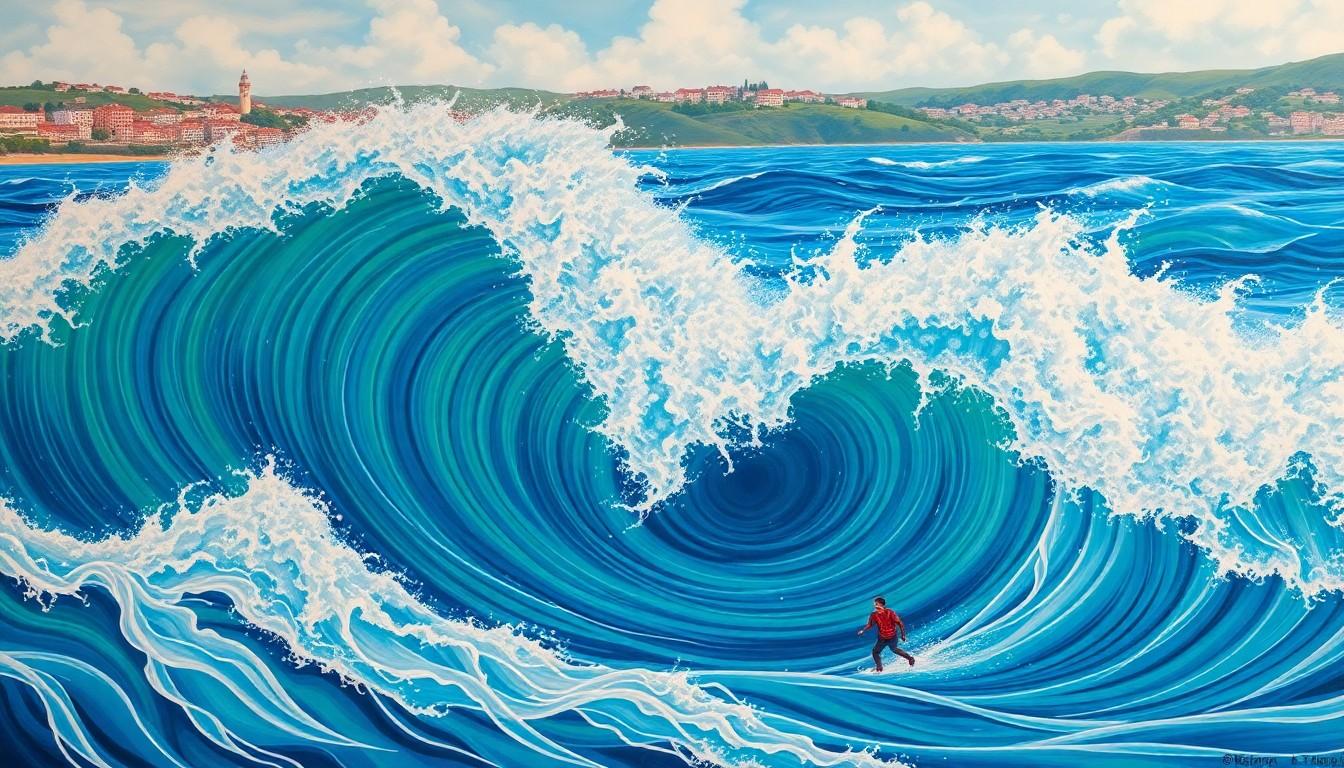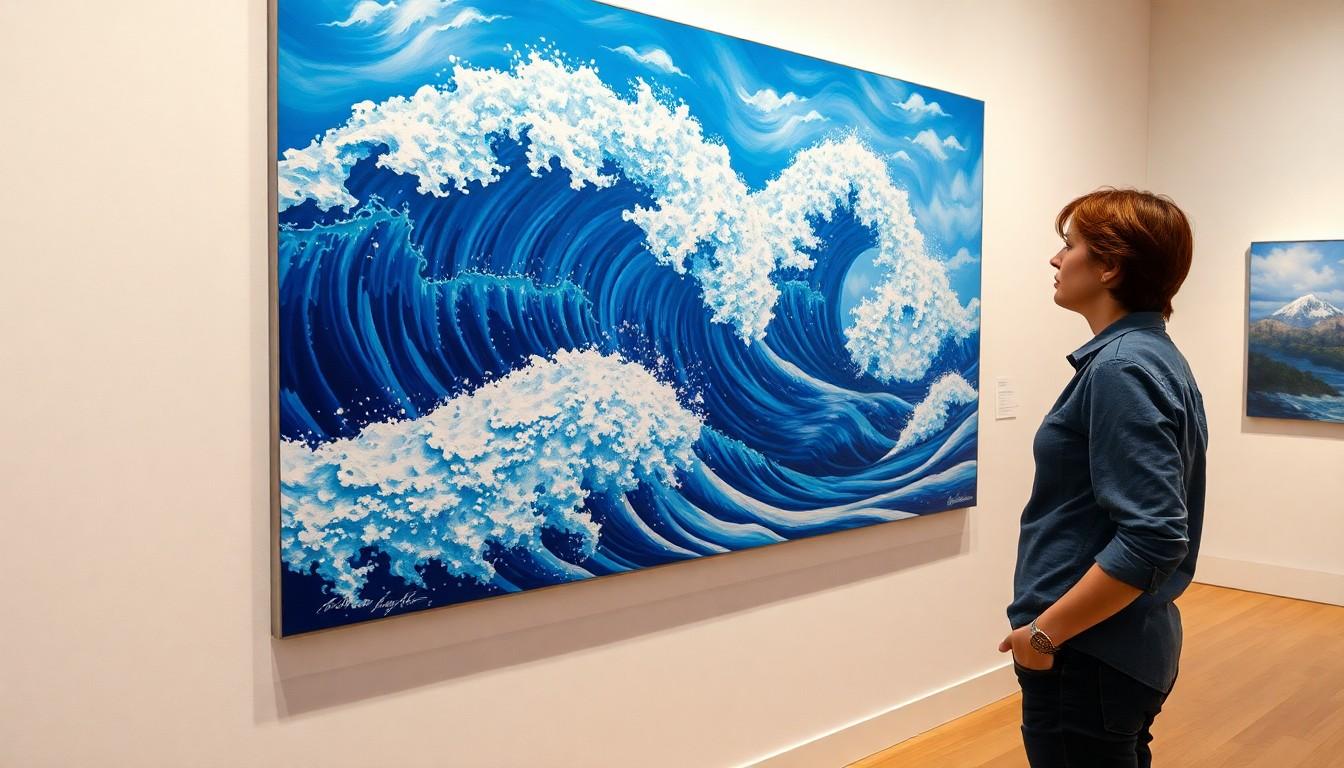Tsunami painting might sound like a wild concept, but it’s a captivating fusion of art and nature that’s making waves in the creative world. Imagine vibrant colors crashing together like a tidal wave, capturing the raw power and beauty of the ocean. This unique art form not only showcases the artist’s skill but also serves as a reminder of nature’s might and unpredictability.
Tsunami Painting
Tsunami painting represents a distinctive artistic expression that embodies the ocean’s immense power. Artists often utilize a range of techniques and vibrant colors to depict waves in motion. Dynamic strokes capture the energy of a tsunami, creating a sense of movement and urgency.
This art form not only showcases technical skill but also communicates a deeper appreciation for nature’s forces. Many artists draw inspiration from actual tsunami events, reflecting personal experiences or cultural narratives. Works often include elements symbolic of the destruction or beauty found in turbulent waters.
Common themes arise in tsunami paintings, such as resilience and vulnerability. Artists may position figures within the waves to illustrate human connection with nature. These visual narratives prompt viewers to reflect on their relationship with the environment.
Collectors frequently seek tsunami paintings for their emotional depth and aesthetic appeal. Galleries often display such works to engage audiences in conversations about climate change and natural disasters. This results in increased awareness and encourages a broader discourse on environmental issues.
Market trends indicate a growing interest in tsunami-themed artwork. Online platforms and auctions showcase an array of styles, from abstract representations to realistic depictions. Emerging artists contribute to this genre, bringing fresh perspectives and techniques.
Educational institutions also recognize tsunami painting’s significance. Workshops and courses may focus on its techniques and inspiring narratives. This exposure fosters greater understanding and appreciation of the interplay between art and nature’s forces.
History of Tsunami Painting

Tsunami painting has evolved as an expressive art form that captures the ocean’s beauty and power. Vibrant colors and dynamic strokes define this artistic genre, conveying emotions tied to nature’s might.
Cultural Significance
Tsunami painting holds deep cultural importance in communities affected by tsunamis. These artworks represent resilience, reflecting personal experiences and collective memories related to disasters. Historically, artists positioned figures amidst turbulent waves, emphasizing humankind’s connection to nature. This representation fosters dialogue on climate change, urging viewers to consider the fragility of human existence. Various cultures utilize tsunami art to narrate stories of survival, reminding audiences of the ocean’s unpredictable force. Artists draw from local narratives, intertwining history and artistic expression. Hence, these paintings serve as more than mere depictions; they encapsulate shared histories, community spirit, and environmental awareness.
Notable Artists
Several artists have gained recognition for their contributions to tsunami painting. Renowned painter Hiroshi Yoshida is known for capturing the stunning contrast between serenity and chaos in his works. His pieces often depict water as both a source of beauty and destruction. Similarly, Takashi Murakami infuses traditional Japanese art with contemporary themes, drawing attention to the cultural significance of tsunamis. Artists like these bridge traditional techniques with modern expressions, influencing emerging creators. They inspire future generations to explore the relationship between nature and art. Collectors seek works from such artists not just for their aesthetics but also for their emotional insights. Their enduring legacy continues to impact the art community, highlighting the ongoing discussion about nature’s power.
Techniques Used in Tsunami Painting
Tsunami painting employs several techniques that enhance its emotional impact and visual appeal. Artists focus on color choices and brushwork to convey the ocean’s energy.
Color Palette
The color palette in tsunami painting is crucial for capturing the mood and movement of waves. Artists frequently use deep blues and turquoises to represent the ocean’s depth. Bright whites depict crashing waves, creating contrast and vibrancy. Shades of gray often reflect stormy skies, adding a dramatic touch. Warm tones, such as oranges and reds, may symbolize danger or urgency during tumultuous events. This varied palette not only highlights the ocean’s beauty but also invokes feelings associated with nature’s power.
Brushwork and Texture
Brushwork and texture play essential roles in tsunami painting, emphasizing the dynamic nature of water. Quick, sweeping strokes convey motion and chaos, replicating the feel of turbulent waves. Layering techniques create depth, allowing light to play across the surfaces. Artists often use palette knives to add texture, making waves visually captivating. Combining techniques like glazing adds luminosity and enhances the sense of transparency in water. These approaches foster an immersive experience, allowing viewers to connect with the artwork on a deeper level.
Impact of Tsunami Painting
Tsunami painting evokes a strong emotional resonance with its audience, merging art and deep personal experiences. Viewers often experience feelings of awe, reflection, and introspection when encountering these pieces. Many works capture the raw power of nature, reminding people of both beauty and danger. Artists often express hopes of instilling a sense of empathy towards those affected by tsunamis. This emotional connection can foster community discussions about resilience in the face of adversity.
Awareness and education play vital roles in the impact of tsunami painting. These artworks serve as teaching tools, shedding light on the realities of natural disasters. Cultural narratives embedded in the pieces promote understanding of historical events and their aftermath. Educational initiatives that use tsunami painting encourage discussions surrounding climate change and humanity’s connection to the environment. Galleries and workshops that showcase this art form provide spaces for dialogue, enhancing awareness about the ongoing challenges communities face in disaster-prone areas.
Tsunami painting stands as a powerful testament to the intersection of art and nature. Through vibrant colors and dynamic techniques, artists convey the ocean’s beauty and its inherent dangers. These artworks not only reflect personal and cultural narratives but also foster a deeper understanding of resilience in the face of adversity.
As interest in this unique art form grows, it continues to inspire dialogue about climate change and humanity’s relationship with nature. Tsunami painting serves as both a reminder and a call to action, encouraging viewers to reflect on their connection to the environment and the stories that shape our collective memory. The emotional resonance of these pieces ensures that they remain relevant, bridging past experiences with future awareness.

